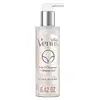What's inside
What's inside
 Key Ingredients
Key Ingredients

 Benefits
Benefits

 Concerns
Concerns

 Ingredients Side-by-side
Ingredients Side-by-side

Water
Skin ConditioningPalmitic Acid
EmollientTriethanolamine
BufferingIsopentane
SolventSorbitol
HumectantStearic Acid
CleansingGlycerin
HumectantSorbitan Stearate
EmulsifyingIsobutane
Sunflower Seed Oil Glyceride
EmollientHydroxyethylcellulose
Emulsion StabilisingPEG-12 Dimethicone
Skin ConditioningAvena Sativa Kernel Flour
AbrasivePhenoxyethanol
PreservativeHydroxypropyl Methylcellulose
Emulsion StabilisingMethylparaben
PreservativePropylparaben
PreservativeEthylparaben
PreservativeBenzaldehyde
MaskingPanthenol
Skin ConditioningTocopheryl Acetate
AntioxidantAloe Barbadensis Leaf Juice
Skin ConditioningAllantoin
Skin ConditioningWater, Palmitic Acid, Triethanolamine, Isopentane, Sorbitol, Stearic Acid, Glycerin, Sorbitan Stearate, Isobutane, Sunflower Seed Oil Glyceride, Hydroxyethylcellulose, PEG-12 Dimethicone, Avena Sativa Kernel Flour, Phenoxyethanol, Hydroxypropyl Methylcellulose, Methylparaben, Propylparaben, Ethylparaben, Benzaldehyde, Panthenol, Tocopheryl Acetate, Aloe Barbadensis Leaf Juice, Allantoin
Water
Skin ConditioningSodium Lauroamphoacetate
CleansingSodium Myristoyl Sarcosinate
CleansingSodium Trideceth Sulfate
CleansingGlycerin
HumectantWater, Sodium Lauroamphoacetate, Sodium Myristoyl Sarcosinate, Sodium Trideceth Sulfate, Glycerin, Sorbitol, Acrylates Copolymer, Citric Acid, Sodium Benzoate, Sodium Salicylate, PEG-120 Methyl Glucose Trioleate, Disodium EDTA, Cocos Nucifera Oil, Olea Europaea Fruit Oil, Simmondsia Chinensis Seed Oil
 Reviews
Reviews

Alternatives
Ingredients Explained
These ingredients are found in both products.
Ingredients higher up in an ingredient list are typically present in a larger amount.
Glycerin is already naturally found in your skin. It helps moisturize and protect your skin.
A study from 2016 found glycerin to be more effective as a humectant than AHAs and hyaluronic acid.
As a humectant, it helps the skin stay hydrated by pulling moisture to your skin. The low molecular weight of glycerin allows it to pull moisture into the deeper layers of your skin.
Hydrated skin improves your skin barrier; Your skin barrier helps protect against irritants and bacteria.
Glycerin has also been found to have antimicrobial and antiviral properties. Due to these properties, glycerin is often used in wound and burn treatments.
In cosmetics, glycerin is usually derived from plants such as soybean or palm. However, it can also be sourced from animals, such as tallow or animal fat.
This ingredient is organic, colorless, odorless, and non-toxic.
Glycerin is the name for this ingredient in American English. British English uses Glycerol/Glycerine.
Learn more about GlycerinSorbitol is a sugar alcohol. It is a hydrating and moisturizing agent created from the reduction process of glucose.
Most sorbitol is usually made from potato starch. It is also found in fruits such as apples and pears.
As a humectant, Sorbitol helps draw water to the skin. This helps keep the skin hydrated. Sorbitol also helps create a thicker texture in products. You might find sorbitol in your toothpaste and other gels.
It is a non-irritating ingredient that is great for those with dry skin.
Sorbitol is a prebiotic. It helps promote the growth of healthy bacteria on your skin. The bacteria on your skin form a microbiome. This microbiome helps protect your skin from infection and harmful bacteria.
Learn more about SorbitolWater. It's the most common cosmetic ingredient of all. You'll usually see it at the top of ingredient lists, meaning that it makes up the largest part of the product.
So why is it so popular? Water most often acts as a solvent - this means that it helps dissolve other ingredients into the formulation.
You'll also recognize water as that liquid we all need to stay alive. If you see this, drink a glass of water. Stay hydrated!
Learn more about Water